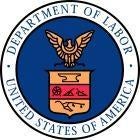One of the main characteristics of our economy since the Second World War has been the growing number of new chemicals that underpin our modern economy.
From a chemical plant to a beauty parlor; from a refinery to a nail salon, today’s workers are potentially exposed to thousands of chemicals every day.
In 1983, the Occupational Safety and Health Administration (OSHA) issued the Hazard Communication Standard (HCS) — a giant step toward ensuring that workers were trained and educated about the chemicals they were exposed to. Commonly referred to as “right to know,” the HCS requires employers to train workers about the chemicals they’re exposed to, label chemical containers and provide safety data sheets containing important chemical safety information.
The standard was flexible – allowing chemical manufacturers to develop their own data sheets and labels. Unfortunately, that flexibility created its own problems: workers sometimes remained in danger because labels and safety data sheets often have very different warnings for similar hazards. Trade was also affected because labels and safety data sheets for the same chemical may look very different in the U.S. than in a country where we want to export it. Safety data sheets were in English, even though many workers in this country understand other languages more fully.
Today, the Obama Administration is announcing a new rule that will align these labels and other required safety information for hazardous chemicals with a new global system developed by the United Nations, called the Globally Harmonized System of Classification and Labelling of Chemicals (GHS). This important change will adapt the HCS into a more uniform way of transmitting information that all chemical manufacturers, importers and distributors, along with employers, must use to communicate the hazards of chemicals to workers.
Figure 1. Revised Hazard Communication Label (HCS 2012)

Chemical labels under the revised standard feature pictograms that immediately alert workers to potential hazards.
Figures 2.1, 2.2. Chemical labels produced under existing standard (HCS 1994)

Under the old system, in which manufacturers developed their own labeling, chemical labels sometimes varied widely in the information provided.
As one worker said during the public hearings held on the GHS proposal, this standard will move us from the “right to know” to the “right to understand.”
Now, if you’re a worker in an industry where you are required to respond to a spill, or handle and mix an array of chemicals, all marked in different containers, combined in different mixtures, and subject to different environmental conditions, you won’t be confused by different types and lengths of confusing informational materials. Instead of words, the new labels use easily recognizable pictograms that anyone can use, no matter what language they speak or what country they work in.
This revised standard – when fully implemented by the year 2016 – will protect workers from the immediate effects of toxic exposures and will also reduce the cancers, kidney disease and other types of chronic illnesses that have for too long plagued workers who are exposed to chemicals every day. As we know, the right to know can lead to the ability to act. And if this standard enables workers and employers to act together to make our workplaces safer, then we’ve been successful.
But protecting workers is not all this new standard does. The revised HCS will also save American business millions of dollars and help them compete in the global marketplace. President Obama issued Executive Order #13563 to direct the federal government to take steps to ensure that regulations not only protect people, but also to ensure that they don’t burden employers or the economy. This new system does that by saving an estimated $475.2 million in productivity improvements for American businesses that regularly handle, store, and use hazardous chemicals and cost savings of $32.2 million for American businesses that periodically update safety data sheets and labels. It’s another example of regulations that can protect people and help businesses at the same time.
I recorded a short video explaining how the GHS system works (see above). You can also find out more about the GHS and the updated HCS at OSHA’s new hazard communication Web site at www.osha.gov/dsg/hazcom/index.html.
Saving workers lives and protecting their long-term well-being is the task that my agency does every day. When those activities also reduce costs and help American businesses, it’s a win for workers, a win for employers, and a win for American enterprise abroad.
David Michaels, PhD, MPH is the Assistant Secretary for OSHA at the U.S. Department of Labor.


 />i
/>i


